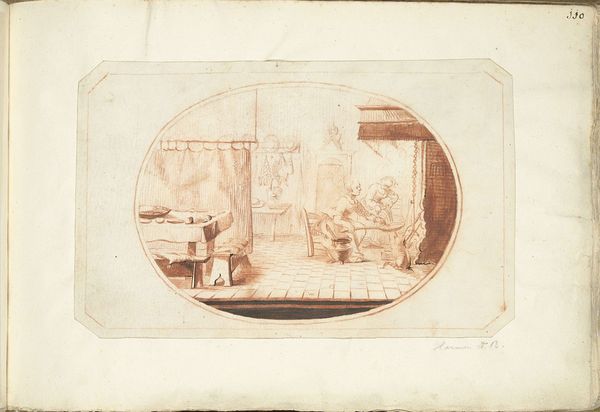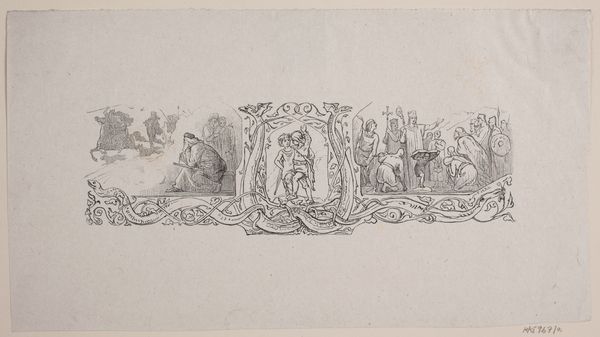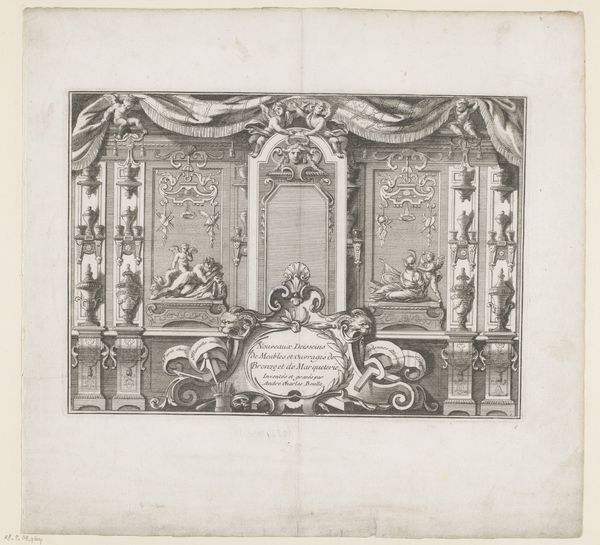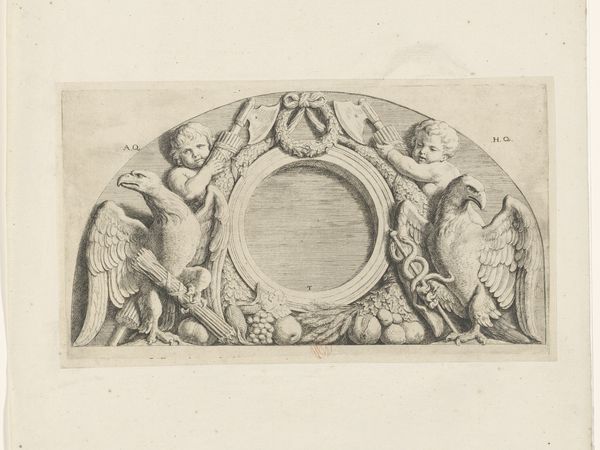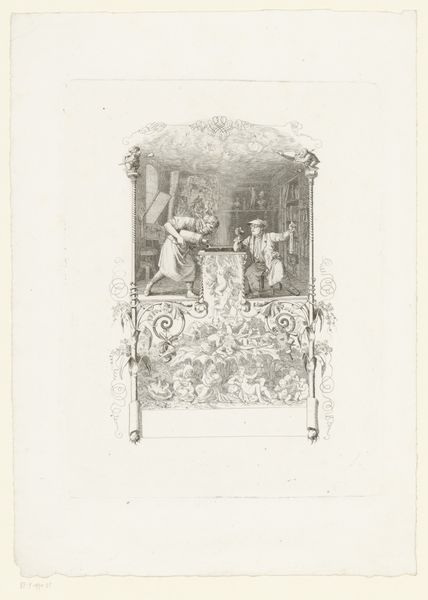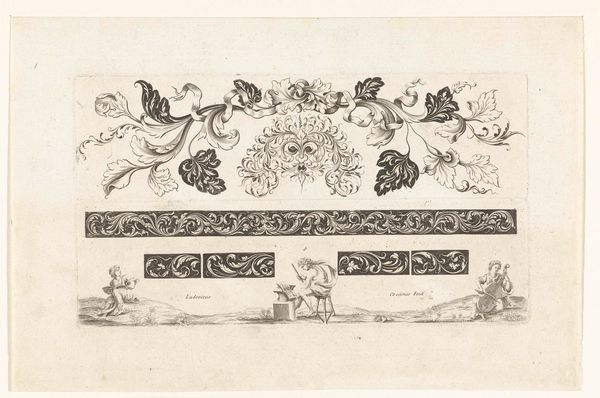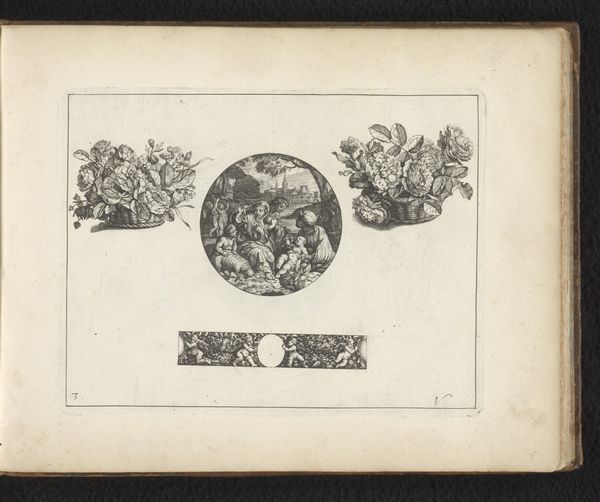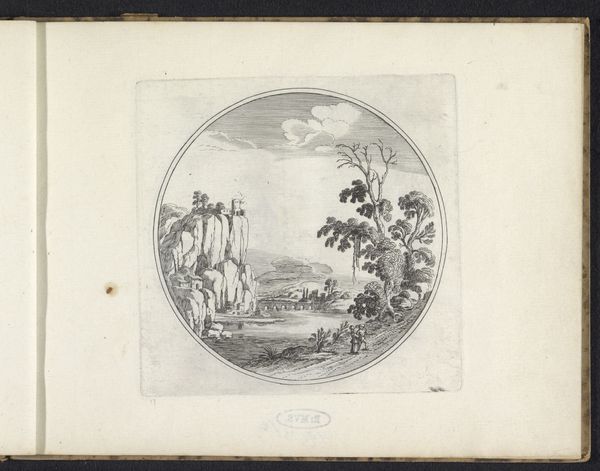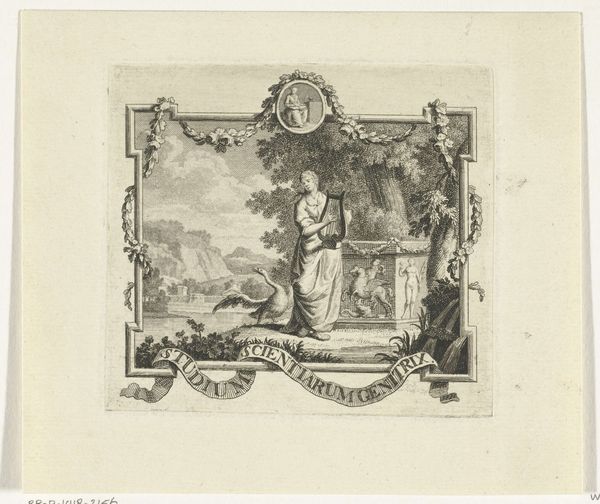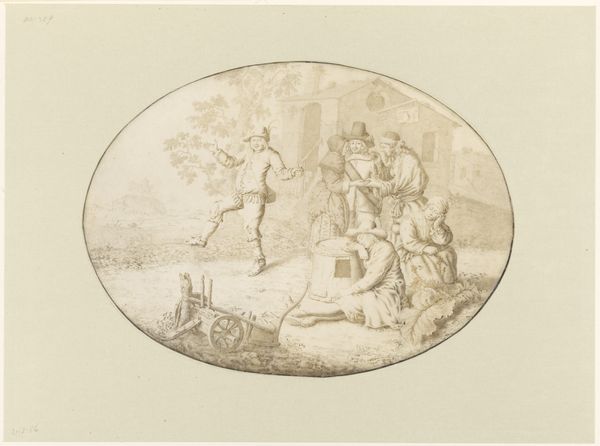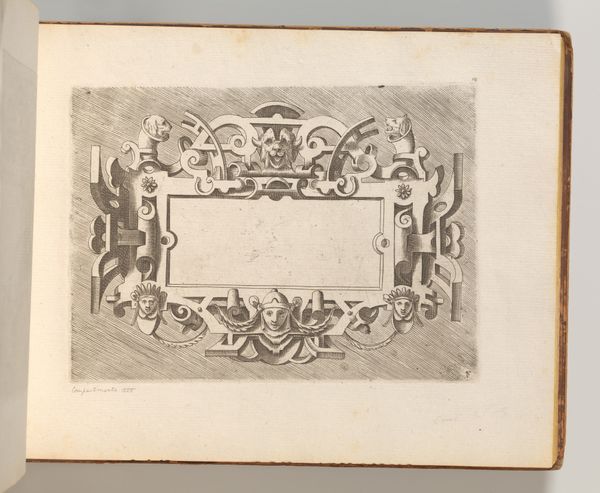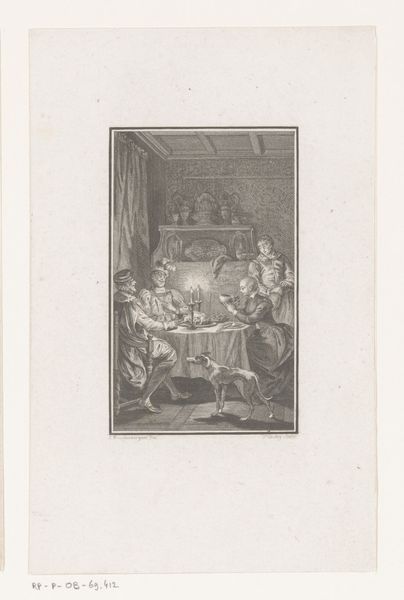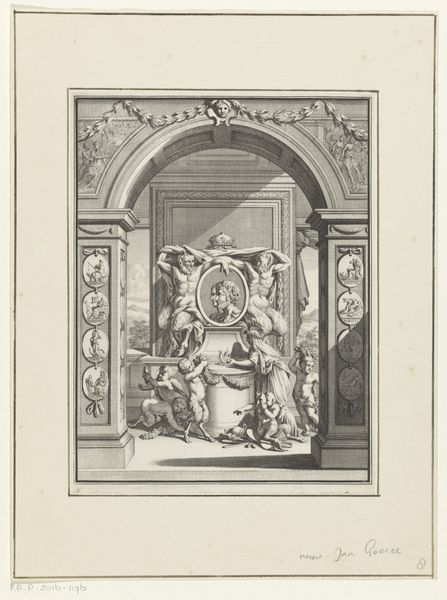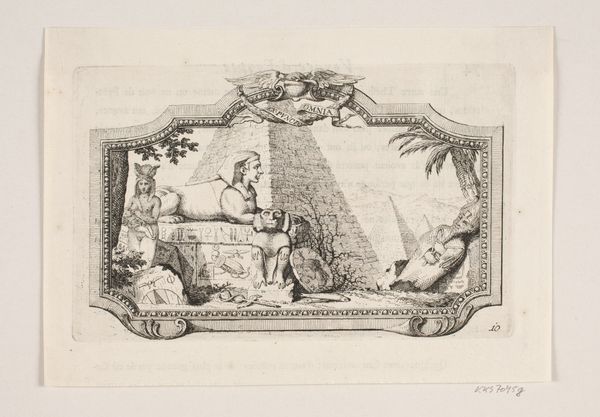
drawing, print
#
pencil drawn
#
drawing
#
amateur sketch
#
toned paper
#
light pencil work
# print
#
pencil sketch
#
old engraving style
#
pencil drawing
#
pencil work
#
watercolour illustration
#
watercolor
Dimensions: Sheet: 9 5/8 × 13 3/16 in. (24.4 × 33.5 cm) Plate: 8 1/4 × 10 3/16 in. (20.9 × 25.9 cm)
Copyright: Public Domain
Editor: This print, "Trade Card" by Reinier Vinkeles, likely created between 1800 and 1900, shows a collection of cherubs playing around what seems to be an empty pedestal. It looks like an announcement of sorts. I'm curious, what readings can you give this image? Curator: This trade card speaks volumes about the evolving role of art in commerce and social life. It seems that even trade cards were becoming art objects. Think of this in relation to the broader shift where the nobility becomes increasingly divorced from power. Items such as these were designed to evoke associations with prestige, playfully suggesting that engaging with trade could grant one access to this social status. Who were the potential buyers, and what message did they wish to project to their clientele? Editor: That’s a good point. It does appear as though its mimicking grander painting traditions, just miniaturized and commercial. Was it typical to see children represented? Curator: The use of putti, or cherubs, as you say, signals a connection to classical antiquity, a common theme during the neoclassical period. The presence of these playful figures lends a lighthearted, almost allegorical air to what is ultimately an advertisement. Were they just whimsical ornaments or strategic signifiers? The empty pedestal, in particular, is intriguing. What purpose do you imagine the blank space would have served? Editor: It’s hard to tell – perhaps a shop owner's name or a depiction of what the trade offered? That neoclassical context adds another layer! Curator: Precisely! The symbolism, the style—it’s all very deliberately constructed to project a certain image. By considering its original context, we can unpack its deeper meanings. Editor: So, more than just a simple advertisement; a carefully considered statement reflecting the values and aspirations of the time! That's something to consider! Curator: Indeed! It’s fascinating how even seemingly mundane objects can offer rich insights into the past. Thank you for that fresh view on such familiar historical matter!
Comments
No comments
Be the first to comment and join the conversation on the ultimate creative platform.
